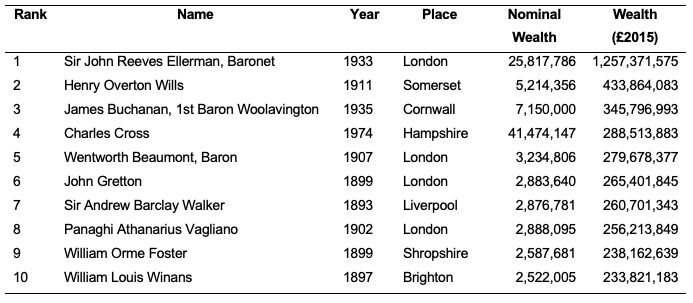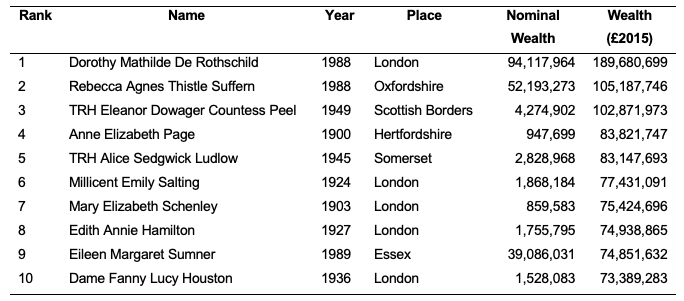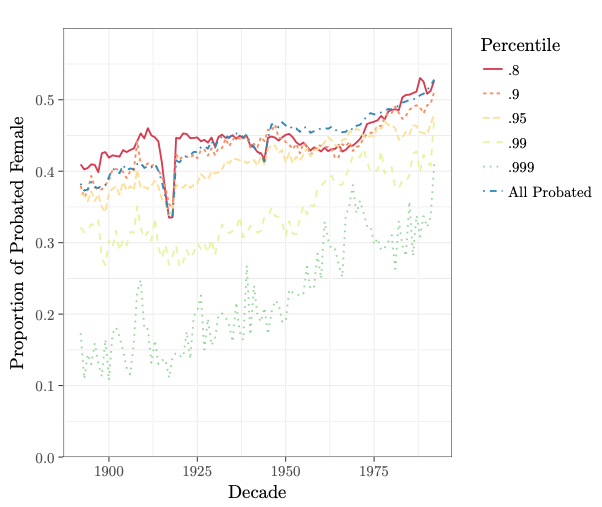The distribution of the gains from capitalism, globalisation, and technological progress preoccupies academic and popular economics (Marx 1867, Piketty 2014). Within countries, the driving force behind the 20th century’s dramatic drop in inequality were the declines in the wealth shares of the top 1% (Alvaredo et al. 2018, Saez and Zucman 2016, Piketty 2014).
From this ‘Great Equalisation’, a “patrimonial (or propertied) middle class” arose (Piketty 2014: 260). This universal process was associated with the rise of the world from the ashes of WWII, the golden age of European economic growth, and the rise of liberal democratic values and middle-class property ownership. In the second half of the 20th century, the West and capitalism were ascendant.
This is not the world in 2019. The financial crisis of 2008 eventually revealed a new fault line in the political and economic structure of the West – the tiny minority who had gained new wealth from technological progress, those who had inherited old money, and the vast majority who held a tiny proportion of wealth. Latent forces were exposed that unleashed the new economic nationalism of Trump and Brexit (Crafts 2019).
In a new paper (Cummins 2019), I show that for Britain, it was not the rise of a broad ‘middle’ class which characterised the changes in the 20th century wealth distribution but a reshuffling of wealth away from the top 1% to the rest of the top 20-30%.
The vast majority of English in the 20th century died with nothing.
The data-building process
Since the 19th century, all deaths in England are subject to wealth tax. Using a combination of old-fashioned archival research, mass scripted downloading, optical character recognition, text parsing, and sets of algorithmic programming tools, I have digitised every individual entry, 18 million records with estate values, from the Principal Probate Calendar from 1892 to 1992. To this I have added all 60 million adult English deaths. This new, detailed data cast a fresh, high resolution on the Great Equalisation of the 20th century. Previously limited samples have been drawn from this source to understand inheritance and wealth accumulation (Harbury and Hitchens 1979, Rubenstein 1981, Clark and Cummins 2015).
The full data are extraordinarily detailed. For example, the 10 richest English who died in the sample period are reported in Table 1. The richest, John Reeves Ellerman, was so reclusive that even the newspapers he owned could not find a photograph for his obituary.
Table 1 The 10 richest English, 1892-1992
By combining the probate data with all English deaths, 1892-2016, I am able to calculate the probate rate reported in Figure 1. For the average English, the proportion of decedents that have wealth significant enough to merit probate rate has been flat since the end of WWII to 2016.
This simple finding is quite stark: despite the great equalisation of wealth over the 20th century, most English have no significant wealth at death. This is even more surprising considering the fact that the nominal threshold for probate (£10 in 1900, for example, and £5,000 in 2019) was only upwardly revised sporadically and has been the same since 1984.
Figure 1 The proportion of English with any wealth at death, 1892-1992
I also contribute new estimates of the top wealth shares. They match closely recent estimates from separate sources using aggregated data (Atkinson and Harrison 1978, Alvaredo et al. 2018), validating the constructed data. I am able to contribute wealth shares beyond the top 20% for the first time. By combining the probate rate and the changes in the wealth shares of the top 30%, I characterise the relative ‘winners’ from the 20th century's Great Equalisation of wealth.
As evidenced in Figure 2, the ‘winners’ are not a broad ‘middle class’. The distributional gains are exclusively confined to the top 30% of the wealth distribution; the median English has no significant wealth.
Figure 2 The English wealth distribution, 1892-1992
The individual-level data also allow the precise testing of theoretical distributions of the wealth distribution. This has importance for those using incomplete data that need to make distributional assumptions and for theory. For example, Piketty’s famous r-g law will lead to a Pareto-shaped upper tail. I find that the log-normal is a better approximation of the wealth distribution than the Pareto power law.
Sex and wealth
Gender has been a neglected aspect of the recent focus on top incomes and wealth shares. The Principal Probate Calendar data collected here contain the full name of all probated decedents. I assigned a gender, based on first name. Table 2 reports the top 10 richest English women from 1892 to 1992.
Table 2 The 10 richest English women, 1892-1992
Figure 3 reports the proportion female amongst the probated English and the top wealth percentiles, by year, from 1892 to 1992. This rises from under 40% in 1892 to over 50% by 1992, when females have a higher probate rate than men. Strikingly, women are consistently less represented in the higher wealth percentiles throughout the century 1892-1992. The trend in all top percentile female ratios, over time, is towards equality but even in 1992 women are still underrepresented amongst the top 5%.
The convergence undoubtedly reflects the rising status of women in the labour force and as wealth holders within English society. The under-representation amongst the very top wealth holding class may reflect specific discrimination against female entrepreneurs, discrimination against women receiving large bequests from their fathers, gender preferences or differences between the sexes at the extreme right tail of innate talent in accumulating wealth.
Figure 3 The proportion of wealth-holders that are female, by percentile of the wealth distribution
Conclusion
Using new population-scale data, I have freshly characterised the English wealth distribution between 1892 and 2016. The 20th century’s Great Equalisation failed to create a broadly based ‘middle’ class England. Even in the post-war years, the period of the massive drop in the wealth-share of the top 1% from 73% to 20%, two thirds of English decedents lived, worked, then died with nothing to their name.
This left the English social and political fabric vulnerable to the protest vote of many in 2016 to leave the EU, following the austerity induced by the financial crisis.
My study is an opening salvo for a research agenda examining the determinants of the English wealth distribution over the past century and more. Future research that can fully exploit the rich individual-level detail of the PPR entries has great promise. The data contain compelling surname information for example as well as exact street addresses of decedents.
The methodology I have applied here to constructing a new dataset can be applied to any set of images of historical records that contain consistent formatting. There are many millions of these images lying on website servers all over the world. As optical character recognition software continues to become more accurate, there is now remarkable potential for new, big data analysis in economic history.
References
Alvaredo, F, A B. Atkinson, and S Morelli (2018), “Top wealth shares in the UK over more than a century,” Journal of Public Economics 162: 26–47 (in honour of Sir Tony Atkinson (1944-2017)).
Atkinson, A B and A J Harrison (1978), Distribution of personal wealth in Britain, Cambridge University Press.
Clark, G and N Cummins (2015), “Intergenerational Wealth Mobility in England, 1858–2012: Surnames and Social Mobility,” The Economic Journal 125(582): 61–85.
Crafts, N (2019), “Brexit: Blame it on the banking crisis”, VoxEU.org, 15 January.
Cummins, N (2019), “Where is the Middle Class? Inequality, Gender and the Shape of the Upper Tail from 60 million English Death and Probate Records, 1892-2016,” CEPR Discussion Paper 13436.
Harbury, C D and D M Hitchens (1979), Inheritance and wealth inequality in Britain, Allen & Unwin.
Marx, K (1867, 1885, 1894), Das Kapital: kritik der politischen ökonomie, Verlag von Otto Meisner.
Piketty, T (2014), Capital in the Twenty-First Century, Harvard University Press.
Rubinstein, W D (1981), Men of property: The very wealthy in Britain since the industrial revolution, Croom Helm London.
Saez, E and G Zucman (2016), “Wealth Inequality in the United States since 1913: Evidence from Capitalized Income Tax Data,” The Quarterly Journal of Economics 131(2): 519–578.








